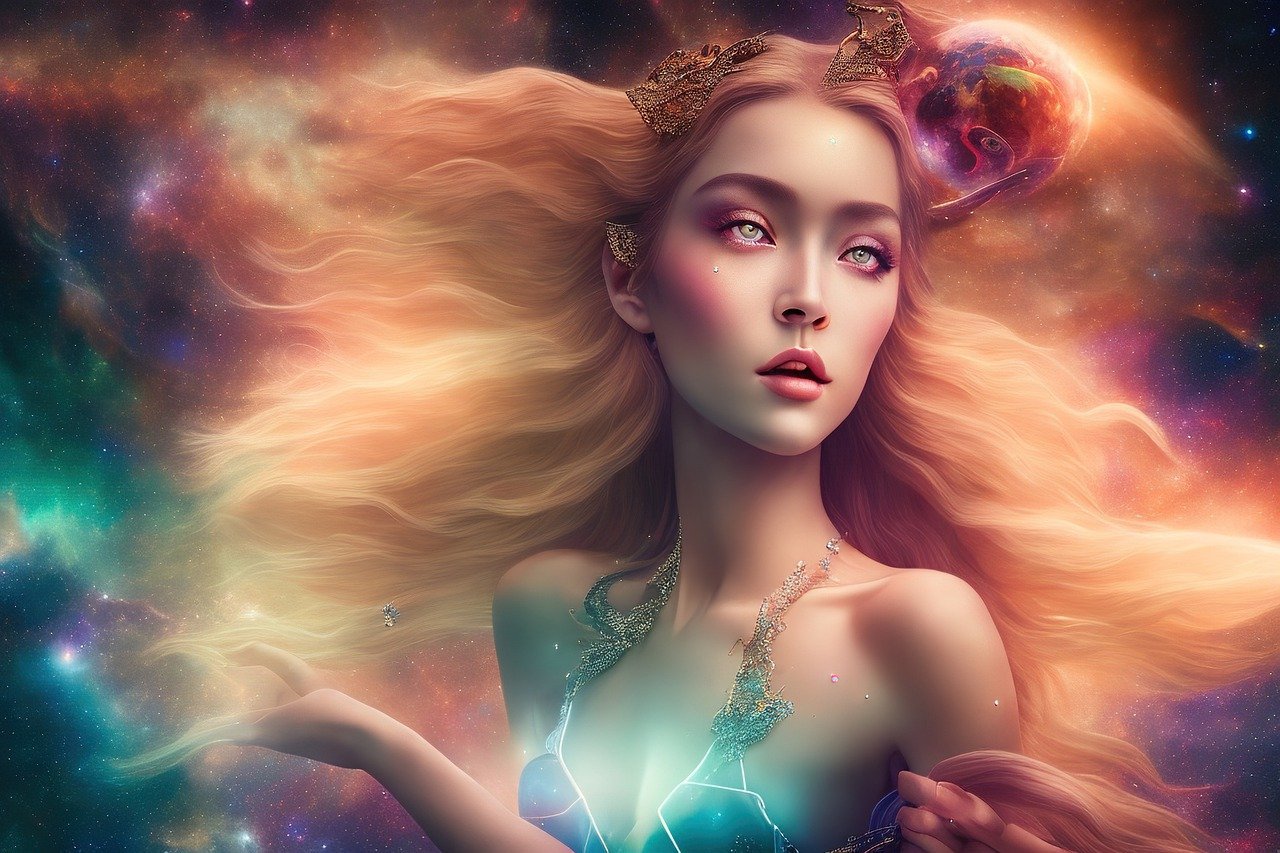Sól: The Sun Goddess of Norse Mythology
In the realm of Norse mythology, Sól (also known as Sunna) represents the goddess of the Sun. She is considered the daughter of Mundilfari and Glaur and is married to Glenr. Various cultures have their own terms for her, such as Sigel in Old English and *Sôwilô or *Saewelô in Proto-Germanic.
The Daily Journey of Sól
Every day, Sól traverses the sky in her chariot, drawn by two horses named Arvak and Alsvid. Throughout this journey, she is relentlessly pursued by a wolf—named either Sköll or Fenrir, depending on the story—who seeks to consume her. According to myth, when a solar eclipse occurs, it signifies that Sköll has nearly overtaken Sól. Ultimately, the fate foretold is that Sköll will catch Sól and devour her, but she will leave behind her daughter to take over her role in guiding the Sun. To mitigate the Sun’s intensity, the shield Svalin stands between Sól and Earth. Unlike common beliefs, in this mythology, the sunlight does not directly originate from the Sun itself but is instead derived from her steeds’ mane. Various names for Sól, such as Sunna and Sunne, evolve from Old English terms for the Sun, while the Sun is referred to as Álfröðull, meaning “glory of the elves.”
Sól in the Poetic Edda
The goddess Sól is referenced multiple times within the poetic Edda. For instance, in stanza 23 of the Vafþrúðnismál, Odin poses a question to the giant Vafþrúðnir regarding the origins of the Sun and Moon. Vafþrúðnir explains that Mundilfari is the progenitor of both Sól and Máni and that they journey across the skies daily to account for the years of humanity. In another instance, the 45th stanza of the same work, Odin queries what will occur when Fenrir ultimately catches Sól. The giant replies that before that moment comes, Sól will bear a daughter who will succeed her after Ragnarok. A similar theme is echoed in Grímnismál, where Odin cites the protective shield Svalin, necessary to prevent the world from igniting if it falls. Stanza 39 describes the relentless chase of the Sun by Sköll, akin to how the Moon is pursued by Hati Hróðvitnisson.
In Alvíssmál, Thor questions the dwarf Alvíss on the various names attributed to the Sun across different realms. Alvíss responds by revealing that humans call it Sun, while gods refer to it as light, dwarves as the “trickster of Dvalin,” giants as “ever-shining,” elves as “the precious wheel,” and the Æsir call it “all-shining.”
Sól in the Prose Edda
References to Sól also appear within the Prose Edda, specifically in the Gylfaginning. When disguising as King Gylfi, Gangleri questions a Völva (Norse seeress) about the governance of the Sun. She explains that Sól is Mundilfari’s daughter, and out of their beauty, they were named after the Sun (Sól) and the Moon (Máni). Mundilfari arranged for Sól to be wed to Glenr, which irritated the gods. Consequently, they elevated Sól and her brother into the heavens, where they would guide their chariots, using embers from Muspelheim to illuminate the worlds below.
Gangleri expresses concern about Sól’s rapid movement, to which the Völva attributes it to the fear of being caught. She clarifies that two wolves pursue them—Sköll after Sól and Hati after Máni—and prophesizes that both will eventually succeed in their chase.
In a later chapter, the Völva foretells Sól’s eventual succession by her daughter after the cataclysmic events of Ragnarok, who will maintain her mother’s celestial duties.
The Sun Rune
Corresponding to the letter ‘s’ in the Younger Futhark, the rune ᛋ is known as Sol, in reference to the goddess and the celestial body she represents. In the Old Futhark, a linguistic reconstruction refers to it as *sôwilô.



